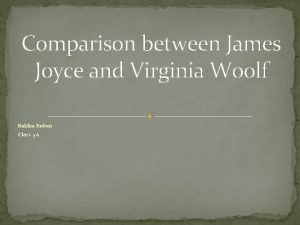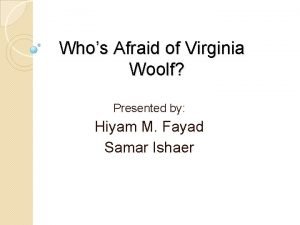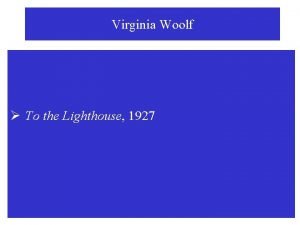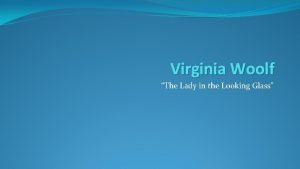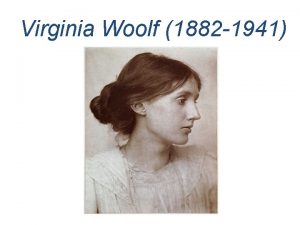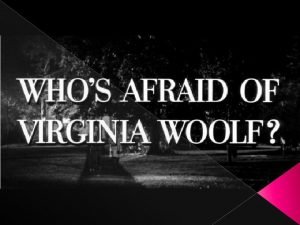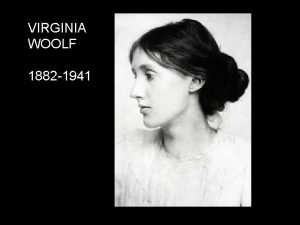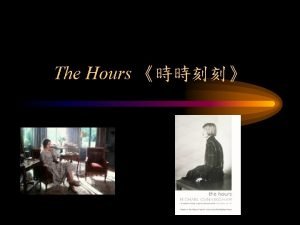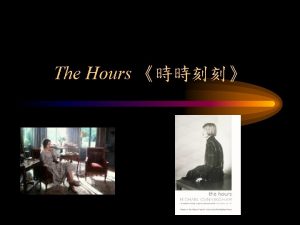Sheltering under a leaf Virginia Woolf and interwar






- Slides: 6

‘Sheltering under a leaf’ Virginia Woolf and interwar London Professor Eve Patten, TCD

‘Bond Street fascinated her; Bond Street early in the morning in the season; its flags flying, its shops; no splash; no glitter, one roll of tweed in the shop where her father had bought his suits for fifty years; a few pearls; salmon on an iceblock. “That is all”, she said, looking at the fishmonger’s. “That is all”, she repeated, pausing for a moment at the window of a glove shop where, before the War, you could buy almost perfect gloves. ’ Mrs Dalloway (1925)

‘The fresh air was so delicious. It had been so stuffy in the Army and Navy stores. And now it was like riding, to be rushing up Whitehall; and to each movement of the omnibus the beautiful body in the fawn-coloured coat responded freely like a rider, like the figure-head of a ship, for the breeze slightly disarrayed her, the heat gave her cheeks the pallor of white painted wood; and her fine eyes, having no eyes to meet, gazed ahead, bright, with the staring incredible innocence of sculpture. ’ Mrs Dalloway (1925)

‘The omnibuses swirled and circled in a perpetual current round the steps of St Paul’s. The statue of Queen Anne seemed to preside over the chaos and to supply it with a centre, like the hub of a wheel. It seemed as if the white lady ruled the traffic with her sceptre; directed the activities of the little men in bowler hats and round coats; of the women carrying attaché cases; of the vans, the lorries and the motor omnibuses. Now and then single figures broke off from the rest and went up the steps into the church. The doors of the Cathedral kept opening and shutting. Now and again a blast of faint organ music was blown out into the air. The pigeons waddled; the sparrows fluttered…/…Then there was a ripple in the air. The great clock, all the clocks of the city, seemed to be gathering their forces together; they seemed to be whirring a preliminary warning. The stroke struck. ‘One’ blared out. All the sparrows fluttered up into the air; even the pigeons were frightened; some of them made a little flight round the head of Queen Anne. ’ The Years (1937)

“Where’s he taking us? ” she said, looking out. They had reached the public part of London; the illuminated. The light fell on broad pavements; in white brilliantly lit-up public offices; on a pallid, hoary-looking church. Advertisements popped in and out. Here was a bottle of beer; it poured: then stopped: then poured again. They had reached theatre quarter. There was the usual garish confusion. Men and women in evening dress were walking in the middle of the road. Cabs were wheeling and stopping. Their own taxi was held up. It stopped dead under a statue: the lights shone on its cadaverous pallor. “Always reminds me of an advertisement of sanitary towels, ” said Peggy, glancing at the figure of a woman in nurse’s uniform holding out her hand. ’ The Years (1937)

‘On every placard at every street corner was Death; or worse—tyranny, brutality, torture; the fall of civilization; the end of freedom. We here, she thought, are only sheltering under a leaf, which will be destroyed. ’ The Years (1937)
